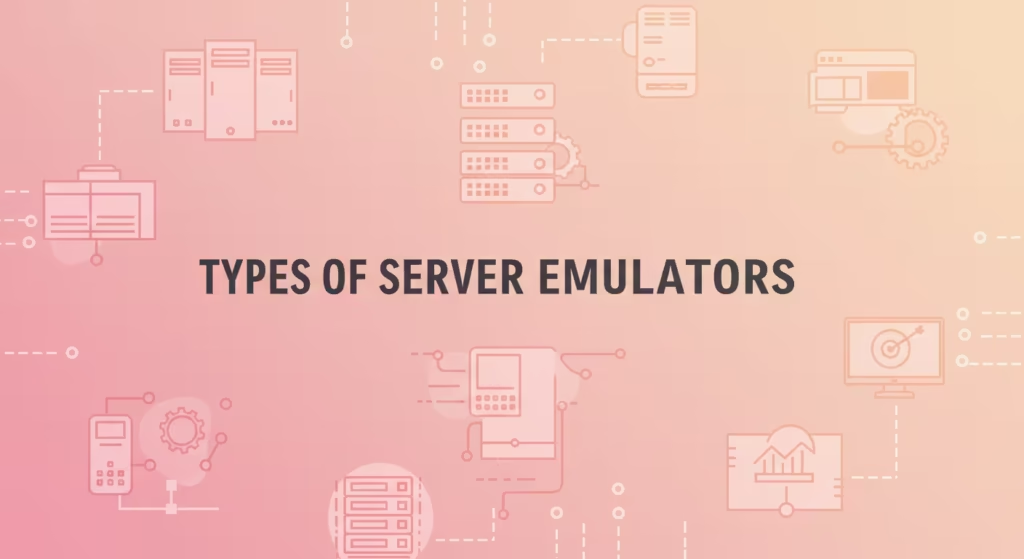Ever wondered how gamers keep classic titles alive long after the official servers have vanished? Enter server emulators ingenious software that mimics an official game or app server, letting you relive nostalgia or even remix your favorite multiplayer experiences. Think of a emulator as a cosplay actor: it dresses up in the right code and protocols so your game client believes it’s chatting with the original. Even if it’s an MMORPG server emulator recreating late-’00s glory days or a console online emulator bridging Dreamcast parties, these projects keep communities vibrant. In this guide, we’ll demystify server emulators, how they work, why they matter in 2025, and how you can set one up legally and ethically without getting burned by copyright dragons. Ready to dive into the emulator underworld? Let’s level up!
- What Are Server Emulators?
- Types of Server Emulators: From Games to Apps
- Setting Up Your Own Server Emulator
- Legal and Ethical Considerations
- Benefits and Risks of Server Emulators
- Popular Emulator Projects and Communities
- Future Trends in Server Emulation
- Frequently Asked Questions
- Expert’s Suggestions: Accepting the Emulator Era
- 553354
What Are Server Emulators?
At its core, a server emulator is like a movie stunt double, it performs the same actions as the original but without wearing the star’s face (or, in this case, official server code). Instead of relying on proprietary binaries, emulator projects reverse-engineer the network protocols, database layouts, and game logic so your client connects seamlessly. Whether it’s recreating private World of Warcraft servers with TrinityCore or booting up a Ragnarok Online realm via rAthena, emulators intercept login requests, handle chats, spawn mobs, and even enforce experience tables. They’re built with languages like C++, Java, or Node.js and often released under GPL or MIT licenses. For gamers who miss the good old days or hobbyist devs keen on network programming, server emulators are both playground and classroom
Types of Server Emulators: From Games to Apps

Server emulators come in all shapes and sizes, most folks first think of game server emulators, like those fan-made World of Warcraft or Ragnarok Online realms where you can crank up XP rates and spawn outrageous loot. But it’s not just MMOs: developers also build application server emulators that mimic REST APIs or chat backends so you can test mobile apps locally without hitting a live cloud. And on the console side, enthusiasts reverse-engineer Dreamcast or PS2 network protocols to revive online play for classics that officially went dark years ago. In short, whether you’re reliving your favorite MMORPG, debugging a new chat app, or hosting a retro console emulators, there’s probably an emulator out there ready to stand in for the “real” server.
Game Server Emulators
When most folks hear “server emulator,” they picture private MMORPG servers where you blitz through levels on a 1,000× XP rate. But what is an emulator in this context? It’s software that replicates the original game’s server logic character creation, combat math, loot drops, and more, so players can recreate or reinvent the game experience without official servers. Projects like TrinityCore or MaNGOS for WoW, Hercules for Ragnarok, or Jabber-style backends for Minecraft spawn entire virtual worlds. These emulators enable fans to host lore-twisted experiences or revive shut-down titles. Want an FFXI private world or a high-drop Lineage II emulator? There’s likely an open-source community scripting the same packets the originals used.
Application and Console Emulators
It’s not just MMOs think WhatsApp-style chat backends or Android-app testing on your laptop. Some devs spin up emulators that mimic REST APIs or messaging servers so front-end code never tires of waiting for a real Cloud. And on the console front, Dreamcast and PS2 titles that once required SegaNet or PS2 Network Adapter? Fans reverse-engineer the lobby and matchmaking protocols, bringing back online play for beloved classics.
Setting Up Your Own Server Emulator
Feeling adventurous? Setting up a server emulator usually means installing prerequisites (MySQL or PostgreSQL, Visual Studio or GCC, and Lua or Python for scripting), grabbing the emulator core from GitHub, and tweaking a handful of config files port numbers, database credentials, XP rates. Port-forward your router, ensure your firewall permits traffic, then fire up the executable or Docker image. Within minutes, you’ve got a private realm bound to your public IP or domain. It’s easier than cooking ramen, but watch out: mismatched client versions or bad packets can crash the server faster than you can say “404.” Always consult the README, join the Discord or forum, and back up those databases!
Legal and Ethical Considerations
Before you dive into emulation bliss, remember the fine line between preservation and piracy. If the emulator code is open-source and you host only assets you legally own, you’re generally in the clear. But distributing original client files or copyrighted art? That’s a DMCA quicksand pit. Some communities sidestep risk by creating private servers with 100% custom assets, or by requiring players to dump their own data from legally purchased copies. Always credit original developers, avoid charging access fees (donations only!), and respect takedown requests. Think of it as sharing grandma’s secret pie recipe you can teach others how to mix the dough, but don’t hand out her locked-up family heirloom crust.
Benefits and Risks of Server Emulators
Server emulators offer a ton of cool perks, but they’re not without their downsides. On the bright side, they breathe life back into dead or abandoned games, giving fans a way to play titles that are no longer officially supported. You can customize gameplay, run private communities, and even learn a lot about networking, databases, and coding by working with these systems. Plus, they’re usually free and open-source, making them super accessible.
But here’s the flip side: there are some real risks. Legal trouble can pop up fast if you distribute copyrighted content or violate the terms of service. Some emulators are unstable or poorly maintained, leading to crashes, bugs, or even security issues like backdoors. And because many projects are hobby-based, support can vanish overnight. So while server emulators can be a powerful tool for gamers and developers, it’s important to use them responsibly and always understand the boundaries.
Benefits of Server Emulators
Why bother with an emulator? For starters, they’re time machines that preserve shut-down games and spark fresh tweaks, boosted levels, custom events, or entirely new zones. They’re free, community-driven, and perfect for modders wanting to test new features without corporate red tape. Educators love them too; reverse engineering a server emulator can teach budding developers about network protocols, database schemas, and real-world C++ or Java code flows.
Risks and Challenges
But it’s not all sunshine. Legal threats loom if you mishandle copyrighted assets, and incomplete packet reverse-engineering can lead to unstable builds hello, random disconnects! Malicious forks might sneak in backdoors or coin miners. Plus, small communities sometimes flame out, leaving admins with orphaned code. If you value stability over chaos, vet your emulator’s GitHub activity: look for recent commits, active issue threads, and responsive maintainers.
Popular Emulator Projects and Communities
Not sure which project to back? For WoW private servers, TrinityCore and MaNGOS dominate thanks to extensive documentation and thousands of contributors. Ragnarok Online fans have Hercules and rAthena branching off the original eAthena codebase. Minecraft hosts choose Spigot or Bukkit forks for plugin support. And if you’re tinkering with retro console networking, look up DolphinHQ’s Netplay or Dreamscoop for SegaNet magic. Hop onto Reddit’s r/privatewow, r/RO_emulator, or specialized Discords there’s an entire world of enthusiasts ready to share SQL tweaks, rate-limiting scripts, and mod packs.
Future Trends in Server Emulation
What’s next? Imagine AI-driven emulation that automatically patches protocol changes when the official game updates, or cloud-hosted emulator fleets on AWS and GCP scaling to thousands of concurrent players. Blockchain gaming might spawn decentralized emulators where each node verifies game state. And with Rust and Go gaining traction for networking, we’ll likely see ultra-low-latency, memory-safe emulator cores replacing legacy C++ code. The emulator scene is evolving faster than ever are you ready to code the next generation?
Frequently Asked Questions
Are private servers the same as server emulators?
Not always. A private server can run on original server binaries (if leaked), whereas a server emulator is a clean-room reimplementation of server behavior. Emulators avoid proprietary code but mimic functionality, while private servers sometimes rely on the real deal.
How much does it cost to run a server emulator?
Surprisingly little! A modest VPS with 2 CPU cores, 4 GB RAM, and SSD storage can run a mid-sized realm for under $10/month. Hosting a small in-house server on your PC costs zero dollars, though you’ll pay the electricity and Internet bill. If you scale up to hundreds of players, budget $20–50/month, and automate backups for peace of mind.
Expert’s Suggestions: Accepting the Emulator Era
Server emulators are the unsung heroes preserving gaming history, empowering customization, and teaching real-world networking skills. Whether you’re a casual player craving nostalgia or a developer itching to reverse-engineer packet flows, there’s an emulator project for you. Just remember: stay legal, respect original IP, and contribute back to the community. Now fire up that shell, grab your favorite emulator core, and bring your dream server to life because in the world of emulation, the only limit is your imagination.






